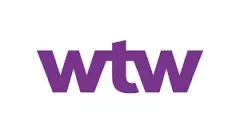The number of states in the U.S. with pay transparency laws has jumped, requiring employers to share base pay, other compensation and benefit information in job postings.
Employer Action Code: Act
Five new states mandating employer disclosure of pay information for open positions will make for a total of 14 states (plus eight cities/counties) that have enacted pay transparency legislation — including three of the most populous states (California, New York and Illinois). Together, these account for around a third of the U.S. workforce.
Key details
While details differ, the various new transparency laws generally will require in-scope employers to include information on pay scales or ranges in both external and internal job advertisements and postings and will apply to new and existing positions for new hires and internal transfers. In addition to disclosing information on base pay, employers will be required to provide information on benefits and other forms of compensation (as under many of the existing U.S. pay transparency laws). All of the new laws apply only to employers with employee head count over a specified level, though the counting method varies. Some base the number on all company employees in that state or nationwide, and, in the cases of Illinois and Vermont (similar to New York), this may include positions outside of the state where the person hired would be reporting to someone located in those respective states.
Other notable variations in the new mandates include the Massachusetts law also requiring companies with 100 or more employees to report wage data annually to the state, to be used for statewide wage reports — joining the ranks of California and Illinois. The Illinois law requires covered employers to announce or post all opportunities for promotion internally for employees within 14 calendar days of any external job postings for the same position, whereas the New Jersey law only mandates "reasonable effort" from employers to inform employees of such internal opportunities within their respective departments. Under Illinois' 2021 Equal Pay Act, employees already may request and receive anonymized data on their job classification or title, and the pay for that classification, from the state Department of Labor.
General head count criteria and implementation dates of the new pay transparency requirements are as follows:
- Illinois — employers with 15 or more employees, from January 1, 2025
- Massachusetts — employers with 25 or more employees, from October 29, 2025
- Minnesota — employers with 30 or more employees, from January 1, 2025
- New Jersey — employers with 10 or more employees, from June 1, 2025
- Vermont — employers with five or more employees, from July 1, 2025
Employer implications
Employers in the states with pay transparency laws should review their job and pay structures and their hiring and rewards policies and practices to ensure compliance with the new disclosure requirements. The varied nature of the state-level mandates may be further complicated by municipal-level requirements or those of neighboring states (e.g., Connecticut and New York, which both border Massachusetts and have existing laws in place) for operations that commonly have staff crossing state borders for work.
The content of this article is intended to provide a general guide to the subject matter. Specialist advice should be sought about your specific circumstances.


